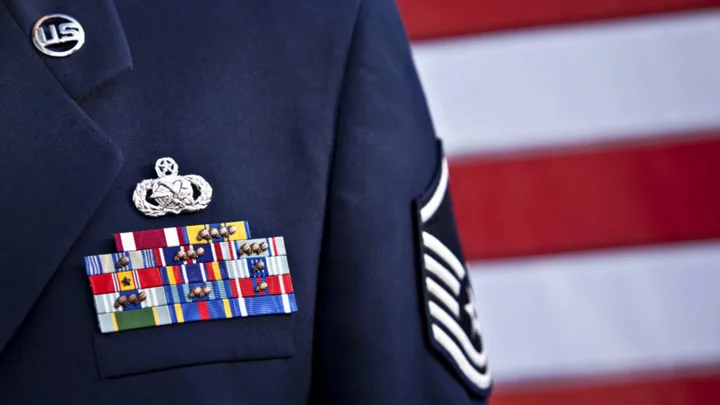Whether you know someone who served in the military or you served yourself, Veterans Day is a holiday worth observing. According to the United States Census Bureau, there were 16.2 million military veterans in the country in 2022—here are some things to remember when honoring them on November 11.
1. Don’t confuse Veterans Day with Memorial Day.
Memorial Day (the last Monday in May) and Veterans Day (November 11) both honor the people who served in the United States military, but there’s a major difference between the holidays. Memorial Day is reserved for those who died while serving their country, while Veterans Day is a time to recognize all veterans, both the dead and the living.
2. Veterans Day used to have a different name.
On November 11, 1919, President Woodrow Wilson issued an Armistice Day proclamation—a reference to the agreement made between the Allies and Germany to end World War I a year earlier. Congress officially declared Armistice Day a federal holiday in 1938 (most states already had their own observances). In 1954, President Dwight D. Eisenhower signed legislation that officially changed the name to Veterans Day, making the holiday more inclusive of veterans who had served after and prior to the First World War.
3. The date of Veterans Day holds a historical significance.
Though the date changed a few times throughout the 20th century, today Veterans Day falls on November 11 of each year. The date was chosen to coincide with the anniversary of the end of World War I, which occurred at the 11th hour of 11th day of the 11th month.
4. Fewer than 200,000 World War II veterans are alive today.
World War II ended more than 75 years ago, but some of the veterans who fought in the war are still with us. According to the most recent estimate from the National WWII Museum, “119,550 of the 16.1 million Americans who served in World War II are alive as of 2023.” But many of the veterans are at least 90 years old.
5. Not every veteran fought in a war.
Members of the military don’t need to fight overseas to serve their country. According to the Pew Research Center, nearly a quarter of the veterans living in the U.S. today served only during peacetime. Military missions that don’t involve war may include protecting U.S. embassies, providing natural disaster relief, and bringing medical assistance to impoverished communities.
6. Three states have huge veteran populations.
There are three U.S. states whose veteran populations exceeded 1 million as of 2020: California with 1.64 million, Texas with 1.57 million, and Florida with 1.14 million. And the states with the highest percentage of veterans are Alaska, Virginia, Montana, Wyoming, Hawaii, and Maine, all with around 10 percent of the adult population being veterans. These numbers still make up just a fraction of the country’s veterans, who can be found in all parts of the U.S.
7. Veterans tend to be well-educated.
People who served in the military tend to have completed higher levels of education than those who have not enlisted. According to the National Conference of State Legislatures, in 2017, 37.1 percent of U.S. veterans have completed some college or have an associate’s degree and 27.7 percent have earned at least a bachelor’s degree.
8. Other countries honor their own versions of Veterans Day.
Several countries have their own holidays recognizing veterans and those who have died in wars that fall on or around November 11. But the important day goes by a different name outside the U.S.: In Canada, it’s Remembrance Day, and many in the UK observe both Remembrance Sunday and Armistice Day.
9. Veterans are more likely to be unhoused.
Despite accounting for only 7 percent of the general U.S. population, veterans make up roughly 11 percent of the adult unhoused population. The National Coalition for Homeless Veterans reports there are more than 40,000 veterans living without homes on any given night in the U.S. Compared with the total veteran population, younger veterans are disproportionately likely to be unhoused, though there are people who have served in a range of wars—including World War II, the Korean War, Vietnam War, and Afghanistan and Iraq—living on the streets.
10. Many veterans leave the armed forces with mental health issues.
Mental illness crops up in veterans at an alarmingly high rate. According to the RAND Center for Military Health Policy Research, in 2008, close to one-fifth of veterans who served in Iraq or Afghanistan came home with either major depression or post-traumatic stress disorder. These issues can have many potential causes, but in a significant portion of veterans, traumatic brain injuries may have been a key factor.
11. You can support veterans any time of year.
From picking up the tab for a veteran at your local diner or driving them to a doctor’s appointment, there are many small ways to show your gratitude to the veterans in your community. There are also plenty of charitable organizations dedicated to supporting veterans around the country. Here is a list of some of the veterans’ groups looking for donations and volunteers.
A version of this story originally ran in 2018; it has been updated for 2023.
This article was originally published on www.mentalfloss.com as 11 Things to Remember This Veterans Day.

